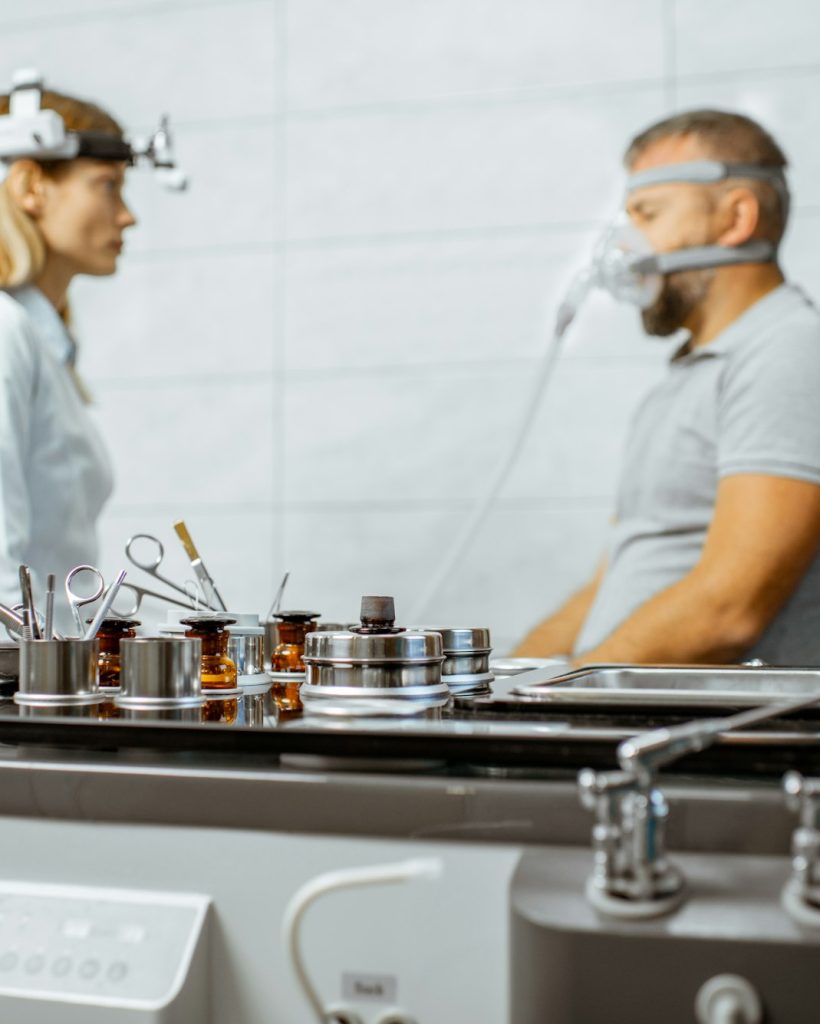

Obstructive sleep apnea (OSA) is a common sleep disorder. It is caused by the collapse of the airway in the back of the nose, mouth and throat during sleep. Positive airway pressure (PAP) devices can reverse or minimize symptoms of sleep apnea by using air pressure to open the upper airway during sleep. PAP therapy can help you get a full night’s sleep.
KEY POINTS:
Obstructive sleep apnea is a chronic disease that can cause poor quality sleep and affect your mood. It also increases the risk of obesity, high blood pressure, heart disease, stroke, type 2 diabetes, erectile dysfunction and depression.
Many people suffering from sleep apnea have low daytime energy.
PAP therapy is the most common and most successful treatment for sleep apnea.
A variety of PAP mask types and sizes are available.
PAP therapy can help you live a longer, healthier life, with substantially better sleep.
Learn how to use your PAP machine correctly and follow up with your doctor to make sure it is working.
Am I At Risk: Excess body weight is the leading risk factor for obstructive sleep apnea, but thin people can have sleep apnea too. The risk also increases if you have a large neck, tongue, tonsils or jaw. Sleep apnea is more common in men than in women, but the risk for women increases during and after menopause. The risk of sleep apnea increases as you age.
Obstructive sleep apnea causes the airway to collapse during sleep, and air cannot get to the lungs. This leads to a brief arousal from sleep that causes sleep fragmentation and poor sleep quality. This cycle can repeat hundreds of times in one night, but typically these events are not remembered in the morning. Your bed partner may notice that you snore loudly or repeatedly stop breathing. Untreated sleep apnea can cause daytime sleepiness and can even affect your mood. Using a PAP device helps hold your airway open with air pressure and allows you to get deeper, more restful sleep.
Am I At Risk: Excess body weight is the leading risk factor for obstructive sleep apnea, but thin people can have sleep apnea too. The risk also increases if you have a large neck, tongue, tonsils or jaw. Sleep apnea is more common in men than in women, but the risk for women increases during and after menopause. The risk of sleep apnea increases as you age.
Modern PAP machines have three components:
TYPES OF PAP THERAPY: PAP therapy is the most common and most successful treatment for obstructive sleep apnea. There are several types of PAP machines. These include CPAP (continuous positive airway pressure), APAP (automatically adjusting PAP), and BPAP (bilevel PAP). Your doctor will help determine which one is best for you.
COMMON QUESTIONS: What are the types of masks? The most common kinds of masks are those that cover your nose, those that cover your full face and lastly a mask type called nasal pillows that go directly in the nose. What happens when I travel? You can take your PAP device with you. A travel case for the device and accessories often comes with the machine or can be purchased. Airport x-ray screening does not harm PAP machines. What happens if I have surgery? Bring your PAP with you if you have any surgery or procedure that requires anesthesia or sedation.
What do I do if I don’t like PAP therapy? Your health care provider and home equipment supplier can work with you to find solutions to your problems. Once you adjust to PAP therapy, you will enjoy sleeping well again.
Next Steps:

Facility Member
Since 1977, the American Academy of Sleep Medicine (AASM) Standards for Accreditation have been the gold standard by which the medical community and the public evaluate sleep medicine facilities. Achieving AASM accreditation demonstrates a sleep medicine provider’s commitment to high quality, patient-centered care through adherence to these standards.

At New Mexico Sleep Labs, we are dedicated to diagnosing and treating sleep disorders to help you achieve restful and restorative sleep.
New Mexico Sleep Labs by Bedrock Digital
Copyright © . All rights reserved.